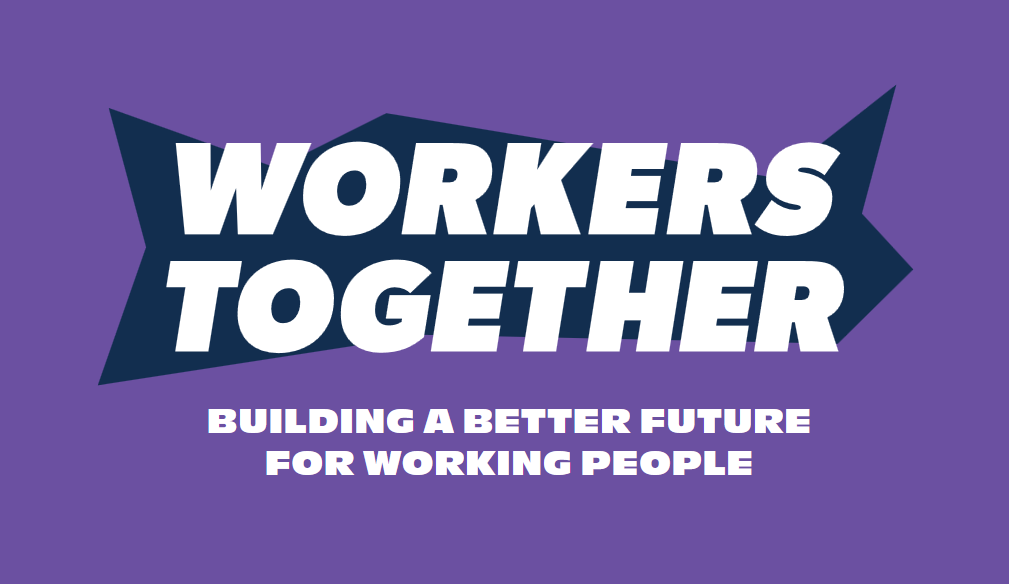Over the past several months, discussions of labour shortages have been virtually everywhere. Those on the left have been rightly skeptical of this framing. Employers having to compete for workers rather than workers having to compete for jobs is, after all, a welcome change of pace. Nevertheless, it’s clear that, economy-wide, a general lack of available labour has persisted as a problem. The left therefore needs to respond to this in a way that protects and empowers workers.
Sometimes intellectual ammunition comes from mainstream sources. Recently, the Organisation for Economic Co-operation and Development (OECD) published a new study, “The Post-Covid-19 Rise in Labour Shortages,” which offers some interesting conclusions and policy proposals through which to deal with the so-called “labour shortage.”
In perhaps the most noteworthy takeaway, the study’s authors find that “qualitative” changes in “workers’ preferences” are playing a role in current labour shortages across member countries. In other words, as they put it, “the post-COVID-19 increase in labour shortages may partly reflect structural changes, in particular changes in preferences, as some workers may no longer accept low-pay and poor or strenuous working conditions.”
The authors continue: “Attracting workers in those jobs has become a common challenge in a context where the pandemic has reinforced and made more visible the detrimental effects of low pay, poor working conditions and weak social protection on workers’ living standards, health and more broadly well-being.”
In the context of tighter labour markets, workers have been more able to act on their “preferences” and pursue better job quality. Employers are simply not accustomed to responding to such demands for better working conditions. Under “normal” circumstances, many bosses can more or less ignore workers’ preferences. A labour shortage forces them to respond.
Therefore, to the degree that high numbers of job vacancies pose a challenge to the broader economy, we need to respond to them in a way that preserves rather than undermines workers’ bargaining positions. With interest rate hikes already underway and the governor of the Bank of Canada advising businesses not to give in to wage demands, it’s all the more pressing that we advocate for worker-friendly policies that address labour shortages.
As the OECD study makes clear, the strong labour market recovery across advanced capitalist countries results from large and unprecedented levels of fiscal support for workers and firms during the pandemic. In many respects, the approach taken by governments to the pandemic downturn can be contrasted with their responses to the Great Recession in 2009 to 2010. In the latter case, economic stimulus was widely understood to have been unambitious and ineffective. Workers paid the price with a weak recovery accompanied by poor job and wage growth.
The COVID-19 economic crisis was handled much better. For all the problems with the Canada Emergency Wage Subsidy and the much greater support to bosses and landlords, the Trudeau Liberals nevertheless did advance a fairly ambitious program of fiscal support. As Statistics Canada recently reported, poverty dropped in Canada because of these interventions.
Robust fiscal stimulus then set the stage for the labour market to bounce back. Across OECD countries, labour markets have tightened noticeably. In Canada and other Anglophone countries, this has been especially pronounced. Whether measured through the vacancy-to-unemployed ratio (the number of unfilled jobs relative to the number of unemployed), the vacancy ratio (the number of unfilled jobs relative to all jobs) or the quit rate (the share of workers who left jobs relative to total employment), labour market tightness has become widespread during the pandemic recovery. By no means is this evenly spread across sectors or occupations, but there’s no denying that, in general, employers are being pressured to improve the wages and quality of jobs to attract applicants for the first time in a long time.
Job vacancy rates have been especially pronounced in accommodation and food services, manufacturing, and health and related services. In all cases, slow wage growth has played a role in incentivizing workers to change jobs, whether by changing industries or employers.
As Dean Baker argues, manufacturing no longer provides the “wage premium” it once did, largely because the rate of unionization in manufacturing has declined considerably. Indeed, as nominal wage growth in Canada began to pick up several months ago amid post-pandemic labour tightness, wage growth in Canadian manufacturing continued to lag.
In accommodation and food services, wages have been persistently low, but are now picking up amid the tight labour market. On the other hand, according to the OECD, workers in “contact-intensive” jobs also seem to be less likely to tolerate the various other problems typically characteristic of these jobs, from long hours and abusive customers, to health and safety risks.
Provincial wage suppression laws have held down wages and salaries in health care, while pandemic burnout has driven nurses and other support staff out of the sector. In good part, the health care crisis Canada faces post-pandemic is a labour crisis bred from decades of worker mistreatment.
In some cases, labour shortages are also the result of shifts in demand. For example, while spending on goods increased during lockdowns when people were largely confined to their homes and couldn’t spend on services, demand for the latter shot up once businesses reopened and stay-at-home measures were lifted. This excess demand for services generated an outsized demand for service labour. In many instances, a “labour shortage” occurred even where industry employment had returned to pre-pandemic levels. Calling this a labour shortage is nominally true but misses the wider economic context, and also tends to place the blame on workers for dynamics far out of their control.
A further noteworthy feature of current labour market tightness has to do with labour force participation from women. Although the pandemic initially impacted women workers far more as caregiving responsibilities increased and women were more likely to experience pandemic-related job loss, their labour force participation is now at historic highs. Employment levels are higher than they were pre-pandemic, with involuntary part-time work at the lowest it has ever been. In other words, employers are less able to draw in women workers as a “reserve” in this tight labour market.
Although the “great resignation” was never as pronounced in Canada as it was in the United States and some other countries, there has been a noticeable increase in job mobility, i.e. people leaving their jobs for better opportunities. As the OECD report points out, in general job mobility is “pro-cyclical.” When labour markets are tight and workers’ bargaining power is increased, there is greater incentive to pursue better job opportunities. In other words, the “quit rate” needs to be considered against the rise in new hires.
In lower-wage industries, particularly accommodation and food service, high quit rates may indicate not that workers are seeking better employment prospects in other industries but rather that they are moving employers within the same industry. Workers with little opportunity to bargain up wages or negotiate better working conditions at their job are quitting and looking for improvements from their current employers’ competition. Here’s an instance where unionization and collective bargaining would be more efficient: rather than incur the costs of hiring and training new workers, employers could retain staff more easily if their workers had the collective capacity to bargain over wages and working conditions.
Taken together, it appears there has been a general transformation in “workers’ preferences.” The authors note: “Workers, including those that have been on the front line during the pandemic, are no longer accepting low-quality jobs, that is, jobs characterised by low-pay, bad working conditions e.g. shift hours, health risks and strenuous tasks, as well as poor social benefits.”
As the report concludes, the labour shortage “crisis” draws “attention to the low quality of many frontline jobs.” Addressing labour shortages in a way that preserves and enhances worker power should be the order of the day.
Toward this end, the authors make several policy recommendations to countries currently dealing with labour shortages.
First, enhancing social protections, such as sick leave and unemployment benefits, particularly for workers in non-standard forms of employment like part-time and gig work, should be a priority.
Second, the authors suggest that governments should encourage employers to offer more flexible work schedules, including work-from-home options. It’s becoming clear that many workers face growing “work-life imbalance” and overwork.
Third, governments and employers need to provide better access to job and skills training and generally better support workers’ transitions between employers and industries. In Canada, this is a pronounced issue. Canadian employers are international laggards when it comes to spending on skills training.
Last, and most importantly, workers need greater access to collective representation and the ability to unionize and bargain over their pay and working conditions. The OECD authors note that in industries with concentrations of corporate power, this is particularly pressing. Labour needs the collective strength to ensure workers benefit from economic growth.
As those of us on the left already know, this last recommendation is the lynchpin. Without the collective power of the labour movement, labour shortages will be “resolved” at the behest of employers. We shouldn’t let that happen.







